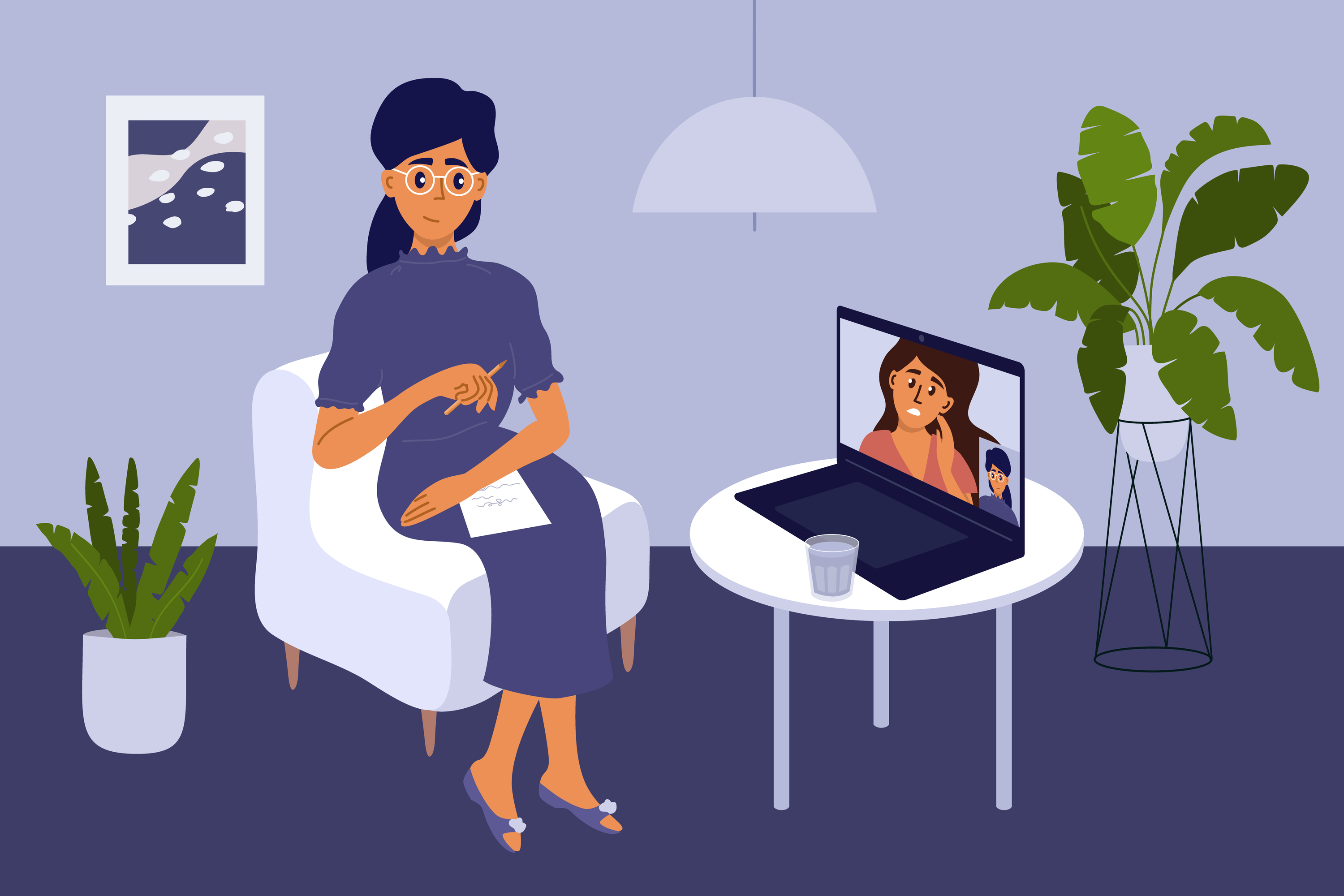
The COVID-19 pandemic has greatly impacted not only our physical health but also our mental health.
These staggeringly different times have instilled fear and stress in the entire Canadian population. It has also caused an even larfger burden for people who already struggled with mental health issues.
People who heretofore had no issues with their mental health have developed anxiety, depression, and other negative impacts on their well-being.
Due to closures happening all over the world, therapists have been forced to close their offices and move their therapy sessions online.
But is online counselling as effective as seeing a therapist in person?
What is Teletherapy (aka “Remote Counselling”)
 As we make the shift to working and studying remotely, a newer form of therapy has gained in popularity as it is able to accommodate people’s changing schedules and needs.
As we make the shift to working and studying remotely, a newer form of therapy has gained in popularity as it is able to accommodate people’s changing schedules and needs.
Teletherapy is a form of mental health counselings that occurs online or over the phone.
There are several modes of teletherapy that include:
- Therapy sessions over the phone
- Having a group chat for group therapy
- Using videoconferencing for all types of therapy (individual, group, couple, etc…)
- Getting therapy through emails or instant messages
Many therapists offer multiple outlets to communicate with their patients, making their services more accessible to everyone.
How Teletherapy Sessions Work
 Although it’s possible to have therapy sessions over the phone or email (with questions & answers back & forth), most clients opt for video conferencing.
Although it’s possible to have therapy sessions over the phone or email (with questions & answers back & forth), most clients opt for video conferencing.
The therapy process is similar to a traditional, in-person counselling session, where the therapist and client get to know each other and go over treatment goals.
Once everything is planned, the therapist begins to dive deeper into the reason the client sought them out. Behavioural changes are recommended and clients are asked to reflect on their emotions.
Both the therapist and client go over ways to keep their confidentiality online, whether that is through logging on from a private website or accessing therapy through an encrypted therapy platform.
The Differences Between Online Therapy and In-person Therapy
 The stress and fear caused by COVID-19 have led many people to seek out help from a therapist.
The stress and fear caused by COVID-19 have led many people to seek out help from a therapist.
With online therapy becoming more popular, many have wondered how different teletherapy sessions are from traditional therapy sessions.
The method of communication is the major difference between online and in-person therapy. The traditional sessions usually take place in a therapist’s office, which allows for face-to-face interactions.
Being in the same room as the client allows the therapist to pick up on body language and other non-verbal actions that will give them a better understanding of how their clients are feeling.
Teletherapy sessions are organized over phone calls, emails, text messages, or video calls. Typically, the method of communication is left up to the client, as the therapist is comfortable using any of the methods available.
However, online sessions can make the therapist’s job a little more difficult, as they cannot catch the client’s body language.
 Another difference between teletherapy and traditional therapy is the convenience.
Another difference between teletherapy and traditional therapy is the convenience.
With online therapy, there is no need to drive to the therapists’ office (or have to rely on someone giving you a ride). You can simply log in to your laptop and videoconference (much like you’d do for school with remote classes).
Clients might feel more relaxed as they are in the comfort of their own home, which might allow them to open up to their therapist more. Many online therapists have flexible schedules and follow non-traditional work hours, which makes it more accessible to people with busy schedules.
The last important factor to consider is effectiveness. Several studies conducted on teletherapy have found that it’s actually just as effective as in-person sessions and provides the same quality of care.
However, some people find that teletherapy just doesn’t work for them. Being face-to-face with another person makes them feel more comfortable and allows them to form a better connection with their therapist.
The better the connection, the more comfortable they’ll feel when talking about their emotions.
The Benefits of Teletherapy
 There are several benefits to online therapy that in-person sessions do not offer.
There are several benefits to online therapy that in-person sessions do not offer.
For starters, teletherapy provides more convenience to the client. The long waits at the therapists’ office no longer exist when all you have to do is have a stable internet connection and a smart device.
Before, people with busy schedules became impatient and refused to cooperate with the therapist after having to wait for hours. Now, therapy is just a click away.
Another benefit of teletherapy is the increase in consistency and regularity.
There are several obstacles that come with attending in-person sessions that are completely avoided with teletherapy. Some of these obstacles include extreme weather conditions, the drive to and from the therapists’ office, and vehicle breakdowns.
With these obstacles no longer being an issue, no sessions are forced to get cancelled and clients would receive regular and consistent care.
Have you heard of an exceptional therapist and wanted to approach them, but their clinic was too far away?
With teletherapy, distance is not an issue. Clients are provided with a much wider range of therapists who might be better suited to help them than their local therapist.
Finally, a smaller benefit to online therapy is that it removes travel costs. Many therapists recommend several sessions a week, meaning their clients will have to drive back and forth to the clinic, and costs will add up in the long run.
Potential Downsides of Teletherapy
 Although teletherapy has many benefits, there are still a few factors to consider.
Although teletherapy has many benefits, there are still a few factors to consider.
The most obvious detracting point of online therapy is the loss of a holistic experience. Some people believe that there isn’t as strong of a connection between the client and therapist online as there is in person.
Some clients struggle to receive empathy from their therapists through the phone or video chat, which could potentially further deteriorate their mental health. People working or studying remotely are familiar with the issues of technology. The effectiveness of the therapy session replies on the stability of the internet connection and the smart devices used.
If a connection is continually interrupted or cannot even form, the productivity of the session is significantly decreased.
Because teletherapy is a relatively new concept, some insurance providers may not accept paying for these services.
Many people rely on their insurance to cover costs of therapy, and cannot receive it otherwise. If they cannot access in-person therapy, then they just resort to not receiving any help.
Getting Help Through Teletherapy
In response to the coronavirus, social distancing has become a new norm.
During these hard and stressful times, it’s become more important to take care of yourself and your loved ones. That’s why, here at Capital Choice, we continue to offer safe and effective treatment plans through teletherapy sessions.
If you or a loved one is in need of therapy, contact us today and find the most suitable counsellor for your needs.
